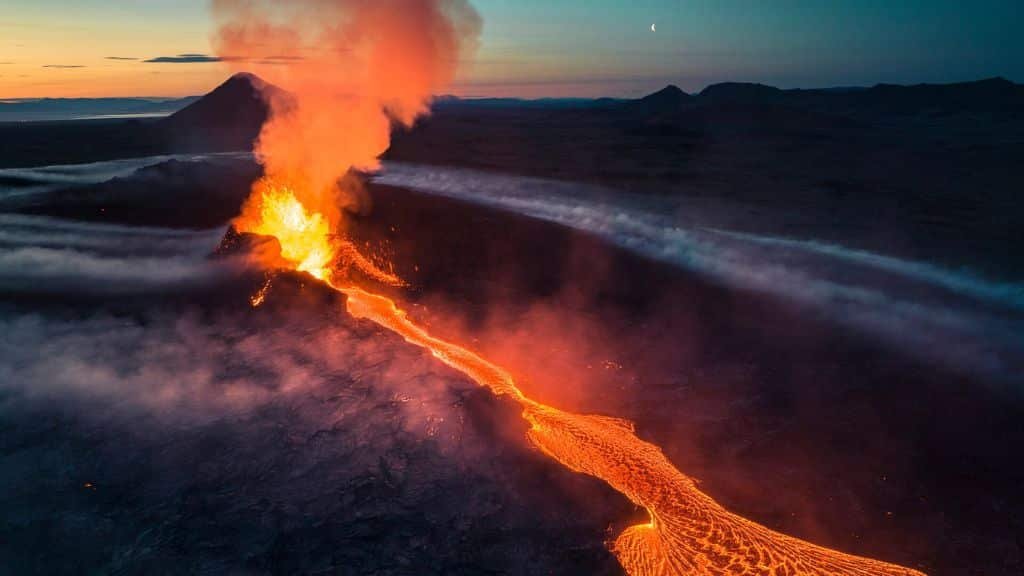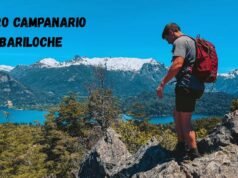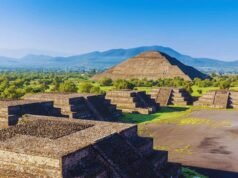Iceland Volcano Eruptions – Iceland is a country where natural extremes coexist in dramatic harmony. Known for its glaciers, waterfalls, and geothermal landscapes, it is also home to one of Earth’s most dynamic volcanic environments.
Iceland Volcano Eruptions are not only common—they are part of what shaped the island itself. From ancient eruptions that formed the terrain to modern volcanic events that captivate the world, Iceland’s fiery geology continues to both challenge and inspire.
Why Is Iceland So Volcanically Active?
Iceland’s intense volcanic activity is due to its unique position atop the Mid-Atlantic Ridge, where the North American and Eurasian tectonic plates are drifting apart. This divergent boundary allows magma to rise from the Earth’s mantle, fueling frequent eruptions.
Additionally, Iceland sits above a geological hot spot—a plume of hot material rising through the crust—further intensifying its volcanic behavior. This combination of plate tectonics and hot spot activity creates a volcanic environment unmatched by most places on Earth.
Iceland Volcano Eruptions History
Iceland’s volcanic history is rich, dramatic, and deeply intertwined with the country’s formation and culture. With over 30 active volcanic systems, the island has seen frequent eruptions for thousands of years. Historical records date back to the settlement era, with significant eruptions like the Laki eruption in 1783, which caused widespread devastation and global climate effects, and Hekla, which has erupted more than 20 times since the Middle Ages.
More recent events, such as the 2010 Eyjafjallajökull eruption, highlighted how even moderate eruptions can have major global impacts. Iceland’s volcanic history is a testament to the island’s dynamic and ever-changing nature.
Related: EOD Adventure Park Delhi
Iceland Volcano Eruption 2025
In 2025, Iceland once again drew global attention with a new volcanic eruption on the Reykjanes Peninsula, part of the same volcanic system that erupted in 2021 and 2022. This eruption continued the pattern of renewed activity in the region after centuries of dormancy.
Though relatively small in scale, it produced spectacular lava flows and glowing fissures, attracting both scientists and adventurous tourists. Authorities quickly secured the area and issued timely safety guidance, demonstrating Iceland’s effective monitoring and response system. The 2025 eruption further underscored the island’s status as one of the most geologically active places on Earth.
Major Volcanoes in Iceland
Iceland is home to some of the most active and awe-inspiring volcanoes in the world, shaped by its unique location on the Mid-Atlantic Ridge. The island’s volcanic landscape features a mix of towering peaks, lava fields, and hidden calderas, each with its own story and eruption history.
From well-known names like Eyjafjallajökull to powerful giants like Katla and Grímsvötn, the major volcanoes in Iceland have not only formed the country’s dramatic terrain but continue to captivate scientists, locals, and travelers alike.
Eyjafjallajökull
Eyjafjallajökull gained international fame in 2010 when its eruption sent massive ash clouds into the sky, disrupting air travel across Europe. Despite its difficult-to-pronounce name, it put Iceland’s volcanic potential in the global spotlight.
Grímsvötn
Grímsvötn, located beneath the Vatnajökull glacier, is Iceland’s most frequently erupting volcano. Its eruptions are often powerful but short-lived, with explosive interaction between magma and ice.
Hekla
Nicknamed the “Gateway to Hell” in medieval Europe, Hekla is one of Iceland’s most historically active volcanoes. It has erupted more than 20 times since settlement, and its unpredictable nature makes it one to watch.
Katla
Katla lies beneath the Mýrdalsjökull glacier and has the potential to produce devastating floods called jökulhlaups. Though it hasn’t erupted since 1918, it’s considered overdue and is closely monitored.
Fagradalsfjall
This volcano captured global attention with its 2021 eruption, offering breathtaking lava displays just a short drive from Reykjavík. It marked the first eruption on the Reykjanes Peninsula in 800 years and has since become a hotbed for volcano tourism.
Read More: Most Popular Thrilling Theme Parks in Dubai to Visit in 2025
Recent and Notable Eruptions
Over the last 50 years, Iceland has experienced several major volcanic events, including:
- 1980–1984 Krafla Fires – A series of eruptions and ground fissures in northern Iceland.
- 1996 Gjálp Eruption – Triggered a significant glacial flood under Vatnajökull.
- 2010 Eyjafjallajökull – Disrupted global travel and highlighted the global impact of Iceland’s volcanoes.
- 2014–2015 Bárðarbunga – Created the Holuhraun lava field, one of the largest in Iceland in over 200 years.
- 2021–2024 Fagradalsfjall Eruptions – Marked the start of renewed volcanic activity on the Reykjanes Peninsula, drawing thousands of visitors and scientists.
How do Volcano Eruptions Affect Iceland?

Volcanic eruptions have wide-reaching effects on the island:
- Air Travel: Ash clouds from eruptions like Eyjafjallajökull can halt flights across continents.
- Glacial Flooding: Eruptions beneath glaciers can cause sudden and dangerous floods (jökulhlaups).
- New Landscapes: Lava flows create new terrain, such as the dramatic fields of Holuhraun.
- Environmental Impact: While some eruptions enrich soil and ecosystems, others may cause temporary air quality issues.
Despite these risks, Iceland is well-prepared, and life continues with careful monitoring and adaptation.
Volcanic Tourism in Iceland
Volcanoes have become a major tourist draw. Fagradalsfjall, in particular, allowed visitors to safely witness lava flows up close—an extremely rare opportunity in the modern world. Tour companies now offer guided hikes, helicopter tours, and educational excursions to various volcanic sites.
Popular volcano viewing areas include:
- Reykjanes Peninsula
- Askja Caldera
- Vestmannaeyjar Islands (site of the 1973 Heimaey eruption)
Tourists are advised to join guided tours for safety, as volcanic landscapes can shift quickly and unpredictably.
READ: Exploring Rugged Trails
Monitoring and Safety Measures
Iceland has one of the most advanced volcano monitoring systems in the world. The Icelandic Meteorological Office (IMO) monitors seismic activity, gas emissions, and ground deformation, providing timely alerts.
Safety measures include:
- Evacuation plans for nearby communities.
- Restricted access to eruption zones.
- Public communication through official websites and alert systems.
Travelers should always check current conditions before venturing into volcanic areas.
Cultural and Mythological Significance
Volcanoes hold a powerful place in Icelandic folklore and history. Stories of trolls, giants, and fire gods are woven into the landscape, especially near active volcanoes like Hekla. The dual forces of fire and ice symbolize Iceland’s raw, untamed spirit and have shaped the nation’s art, literature, and identity.
Even today, eruptions are not just geological events—they are cultural moments that reconnect Icelanders to their island’s primal roots.
Conclusion
Volcano eruptions in Iceland are not just natural phenomena—they are part of the country’s heartbeat. They sculpt the land, shape the people’s resilience, and remind the world of Earth’s dynamic power. For visitors, witnessing this fiery force firsthand is both humbling and awe-inspiring.
Whether you explore lava fields, watch geysers erupt, or marvel at smoking craters, Iceland’s volcanoes offer a front-row seat to the ever-changing planet beneath our feet.
Read Also: Main Attractions and WildWater Cullman Rides
Frequently Asked Questions (FAQs) about Iceland Volcano Eruptions
Curious about Iceland’s volcanoes? This FAQ section answers common questions about Iceland volcano eruptions, from why they happen so often to what to do during an eruption. Learn how these natural forces shape the island and impact travel and safety.
1. Why does Iceland have so many volcanoes?
Iceland is located on the Mid-Atlantic Ridge, where the North American and Eurasian tectonic plates meet and move apart. This creates constant geological activity. Additionally, a hot spot beneath the island brings magma closer to the surface, increasing volcanic activity and creating ideal conditions for eruptions.
2. How often do volcanoes erupt in Iceland?
On average, Iceland experiences a volcanic eruption every 4 to 5 years. However, some years have seen multiple eruptions, especially during active volcanic periods. With over 30 active volcanic systems, eruptions are a natural and expected part of life on the island.
3. Are Iceland’s volcanoes dangerous to travelers?
While volcanoes can be powerful, Iceland has excellent monitoring and safety systems. The Icelandic Meteorological Office tracks volcanic activity closely and issues early warnings. Travelers are safe as long as they follow official advice, stay on marked paths, and avoid restricted areas during an eruption.
4. What was the most famous volcanic eruption in Iceland?
The Eyjafjallajökull eruption in 2010 is the most globally recognized. Its ash cloud disrupted air travel across Europe for weeks. Though relatively small in size, the eruption highlighted how even moderate volcanic events in Iceland can have worldwide effects.
5. Can tourists see active volcanoes in Iceland?
Yes! Certain eruptions, like those at Fagradalsfjall, have allowed visitors to view lava flows and volcanic activity safely, often with guided tours. Even when no eruption is active, visitors can hike through recent lava fields, explore volcanic craters, and see geothermal landscapes all across Iceland.
6. How do volcanic eruptions affect Iceland’s environment?
Eruptions can reshape the landscape, create new lava fields, and enrich soil with minerals. They may also cause glacial flooding (jökulhlaups) or temporary air quality issues. However, Iceland’s ecosystems are resilient, and new land formed by lava often becomes fertile over time.
7. What should I do if a volcano erupts during my trip to Iceland?
Stay calm and follow updates from the Icelandic Meteorological Office and local authorities. Avoid the eruption area unless you’re on an official, guided excursion. Respect all warnings, road closures, and advice from your hotel or tour operator to ensure your safety.
















[…] makes it feel as if you’re floating directly into the sea. The waters are naturally heated by Iceland’s volcanic activity, creating the ideal conditions for year-round soaking in comfort—even as snow falls or […]
[…] Read More: Iceland Volcano Eruptions […]
Comments are closed.